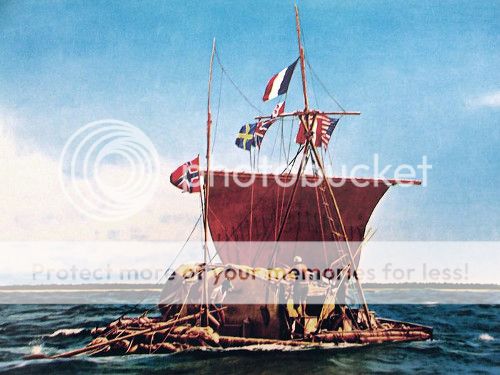
One of the most dreadful accounts of people stranded helplessly in the ocean that I have read is in Unbroken: A World War II Story of Survival, Resilience, and Redemption by Laura Hillenbrand. In this true story, Louis Zamperini, whose performance in the 1936 Olympics caught the attention of Adolf Hitler, crashes into the Pacific on a search mission during WWII in a B-4. While the crash killed eight of the eleven men on board, Zamperini and two of his colleagues float in the open ocean on a life raft. For 47 days, they caught fish, evaded sharks and Japanese bombers and miraculously survived (One of them, Francis McNamara, died after 33 days) to wash up into a Japanese POW camp in Marshall Islands.
Five years after Zamperini’s unplanned voyage across the Pacific, a Norwegian explorer and writer named Thor Heyerdahl, set off on a voyage from Peru to Polynesia. Heyerdahl had a theory that Polynesia was populated not from Asia, but from South America. The early explorers to Polynesia had found pineapple, which was indigenous to South America. Also, certain sculptures found in Polynesia resembled the ones in pre-Columbian Peru. Though his theory was dismissed by academics and the National Geographic Society, because people at that time did not have boats required for such long distance travel, Heyerdahl believed that the rafts they had were sufficient and the ocean current would have favored such a travel; he believed that ancient Peruvians did not see water as a barrier.

There was the possibility that a storm would wash them back into South America or taken them into Galapagos. They survive few storms and soon encounter giant sharks which swim below the raft; there is some stunning photography at his point as the camera goes below the waves. They survive the shark attacks, even going as far as harpooning one and bringing it on board. While there were concerns that the wood was absorbing water and becoming heavy, they eventually figure that they are along the right path. Soon they spot land, and just few days before India got independence, they land at Raroia.
Though Heyerdahl proved that you could travel 5000 miles in the open ocean in a balsa wood raft the his theory that Polynesia was populated by South Americans never found acceptance. The dominant theory seems to be that Polynesia was populated from South-East Asia.